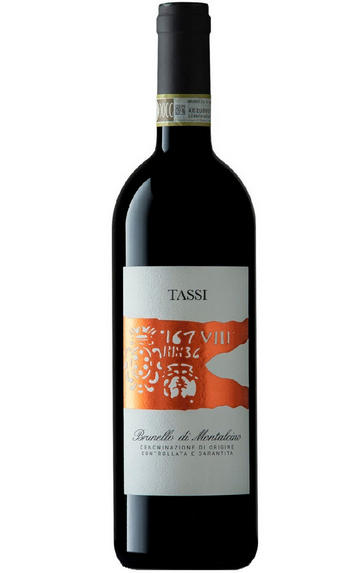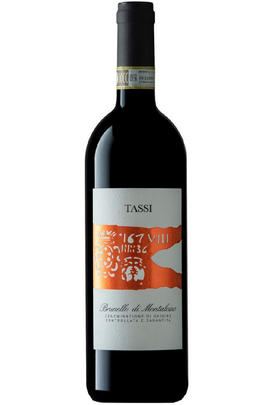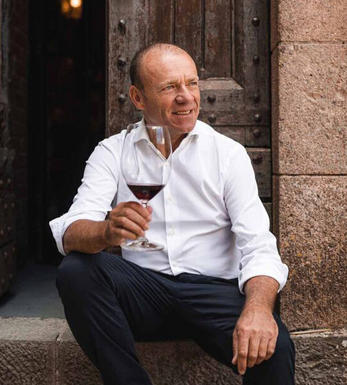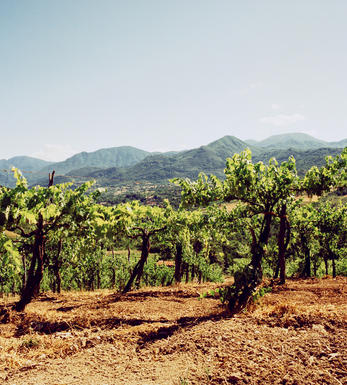
2018 Brunello di Montalcino, Tassi, Tuscany, Italy

Critics reviews
The 2018 Brunello di Montalcino from Tassi keeps me coming back to the glass to take in its darkly alluring mix of crushed strawberries accentuated by hints of ashen stone, curry leaf and exotic spice. This is silky smooth and polished in feel, with ripe wild berry fruits and savory herbal tones all motivated by brisk acidity. Lightly tannic yet potent and long, the 2018 finishes with impressive depth of fruit but also balance.
Drink 2024 - 2030
Eric Guido, Vinous.com (October 2022)
With the white label, the 2018 Brunello di Montalcino is very lean and streamlined with easy fruit aromas of dried cherry and blackcurrant. The fruit is tart and bright but not very intense. Instead, the palate offers punchy flavors and nice energy that does not go unnoticed. Dry tannins and a light consistency give this wine an immediate, near-term drinking window. Production is 10,000 bottles.
Fabio Tassi is a man in motion. He recently built a new winery with cement fermentation tanks and Slavonian casks for aging. In 2016, he introduced the Brunello di Montalcino Vigna Colombaiolo, a vineyard-designate wine, and in 2018 he started making a fun Sangiovese called Brunò (I already reviewed the current 2020 vintage). Organic production started in 2016.
Drink 2024 - 2033
Monica Larner, Wine Advocate (March 2023)
A more velvety and rounded Brunello with notes of wet leather, sour cherries, salted plums, mocha and dried flowers. Juicy core of ripe fruit, framed by sleek tannins. Medium to full body. Delicious and very drinkable.
Drink from 2023
James Suckling, JamesSuckling.com (December 2022)
The rich perfume of the 2018 Brunello Di Montalcino reveals a savory richness of black cherry, fresh leather, porcini, and fresh potting soil. The palate is wonderfully appealing, with supple fruit, a soft texture, fine tannins, and ripe notes of black raspberry, fresh violets or lavender, and herbes de Provence giving it a Southern Rhône-like charm. This lovely wine is drinking well now and will certainly be prime for drinking over the coming 10 or so years.
Drink 2024 - 2033
Audrey Frick, JebDunnuck.com (March 2023)
About this WINE

Tassi
The Tassi family have deep roots in Montalcino. They have a legacy of working the vineyards of Biondi Santi and then as beekeepers, before turning their attention back to wine. Owner Fabio Tassi is a restaurateur, running the town’s flagship Drogheria Franci restaurant, and he owns its most prolific wine shop. His exposure to, and understanding of, Brunello’s wines, vintages and vineyards are greater than most – as are his relationships with many of the great winemaking families of Italy.

Brunello di Montalcino
Along with Chianti, Brunello di Montalcino is Tuscany's most famous DOCG and the region's boldest expression of Sangiovese. Located 30 miles south of Siena with the hilltop town of Montalcino as its epicentre, its 2,000 hectares of vines are naturally delimited by the Orcia, Asso and Ombrone valleys. Brunello is the local name for the Sangiovese Grosso clone from which Brunello di Montalcino should be made in purezza (ie 100 percent).
The Brunello di Montalcino DOCG has a whale-like shape: at its head, at 661 metres above sea level on ancient, stony galestro soils facing east and southeast lies the town of Montalcino, where the DOC was founded. As you follow the spine south towards the tail, the vineyards lose altitude – those around Colle Sant'Angelo are at 250 metres – while the soils become richer with iron and clay. Further east, in the shadow of the 1,734 metre Mont'Amiata lies the village of Castelnuovo dell'Abate where the vineyards are strewn with a rich mix of galestro, granitic, volcanic, clay and schist soil types.
Historically, the zone is one of Tuscany's youngest. First praised in 1550 by Leandro Alberti for the quality of its wines, it was Tenuta Il Greppo who bottled the inaugural Brunello di Montalcino in 1888. By 1929, the region had 925 hectares of vines and 1,243 hectares of mixed crops, while in 1932 it was decreed that only those wines made and bottled within the commune could be labelled as Brunello di Montalcino. Since then, the number of producers has risen from 11 in 1960 to 230 in 2006, while over the same period the vineyards have expanded from 1,000 hectares to 12,000. The region earned its DOC in 1966, and was upgraded to DOCG in 1980.
Brunello di Montalcino cannot be released for sale until five years after the harvest, or six years in the case of Brunello di Montalcino Riserva. During this time the wines should be aged for at least two years in oak, followed by at least four months in bottle (six months for Riservas); maximum yields are 55 hl/ha.
Rosso di Montalcino is declassified Brunello di Montalcino, released for sale 18 months after the harvest.
Recommended producers: Costanti, Fuligni, Lisini, San Giuseppe, Soldera, Cerbaiona

Sangiovese
A black grape widely grown in Central Italy and the main component of Chianti and Vino Nobile di Montepulciano as well as being the sole permitted grape for the famed Brunello di Montalcino.
It is a high yielding, late ripening grape that performs best on well-drained calcareous soils on south-facing hillsides. For years it was blighted by poor clonal selection and massive overcropping - however since the 1980s the quality of Sangiovese-based wines has rocketed upwards and they are now some of the most sought after in the world.
It produces wines with pronounced tannins and acidity, though not always with great depth of colour, and its character can vary from farmyard/leather nuances through to essence of red cherries and plums. In the 1960s the advent of Super Tuscans saw bottlings of 100% Sangiovese wines, as well as the introduction of Sangiovese/Cabernet Sauvignon blends, the most famous being Tignanello.


Buying options
Add to wishlist
Description
This comes from a single vineyard, tucked between the River Orcia and the hilltop Castelnuovo dell’Abate at 240 metres altitude. Here, the strata of soils are mix of iron-rich clay and galestro, filled with calcareous marine fossils. The 2018 vintage gave beautiful balance, without the blocky richness of 2017.
It’s undergone wild fermentation in concrete, and 30 days on skins followed by 30 months in ultra traditional Slovenian botti grandi. The colour is pale, and the nose is perfumed with cool rose. The palate shines with savoury fruit, relaxed, composed and confident with a light mineral brightness and fine earthiness. The finish is smoky and super stylish.
Drink 2023 - 2038
Berry Bros. & Rudd
wine at a glance
Delivery and quality guarantee